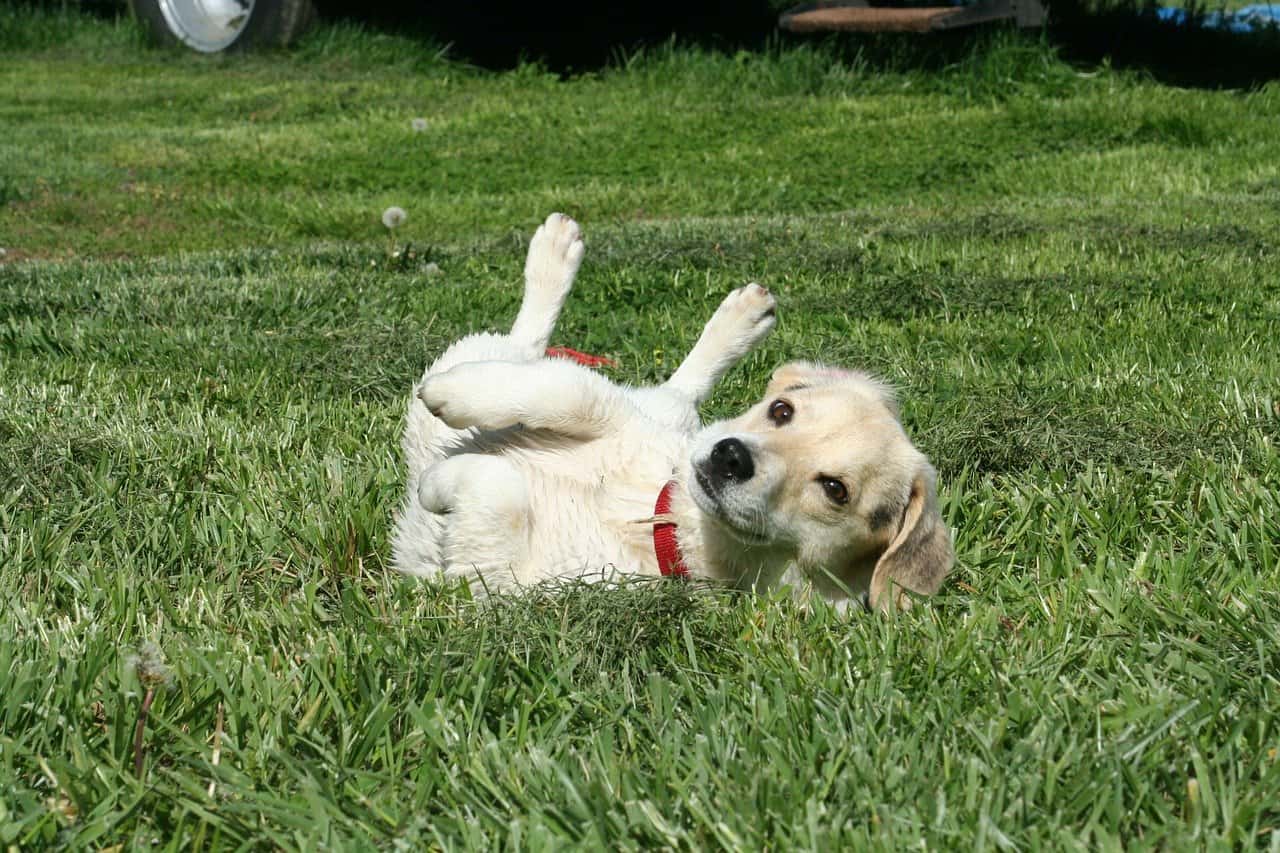Wondering how long to let a puppy cry in a crate? It all depends on the type of crying you’re dealing with.
If it’s natural, it’s not recommended to let the dog whine for hours. However, learned crying is a whole other ordeal and one that should mostly be ignored.
The problem? You have to learn to recognize which is which and when ignoring the whimpers is the only solution!
How Long to Let a Puppy Cry in a Crate?
There’s no denying how useful crate training is, especially if you’re a first-time puppy parent who doesn’t know just how much trouble these tiny rascals can end up in.
However, during the training, you’re bound to notice a few behavior issues and may want to effectively deal with them.
So today’s topic is going to be a good one. If you’re wondering how long to let a puppy cry in a crate, I’ve got all the answers down below.
Why Is My Puppy Crying in Its Crate Anyway?
First things first, though — we have to figure out why the dog is even whining in the first place.
Fortunately, there are a few ways you can go about doing that.
Puppies aren’t super-complex creatures. As it turns out, they will display only two types of crying: natural and learned.
The natural variety is the one we can notice in humans too. When a baby is born, it has to quite literally scream its lungs out.
And later on, whenever its basic needs require some attention, it will naturally cry to get yours.
Puppies are the same way, but with one factor added into the mix — they’re in a completely strange place all of a sudden.
Of course, we could say the same about babies; they’ve been in the womb for nine months.
But in the case of your brand new puppy, it has lived a few weeks next to its mother and siblings.
Thus, your house isn’t home just yet. It also still has some memories of its previous abode.
Why does this matter?
Well, it’s because natural crying is the one that occurs when a puppy is fearful and isolated or uncomfortable (for instance, when it wants to go potty).
Learned crying, on the other hand, is evident when the puppy is only asking for your attention.
How Long to Let a Puppy Cry in a Crate If It’s Very Young?
And just like that, we’re very close to the solution.
It’s fairly obvious that in the case of natural crying, you shouldn’t let the puppy cry in its crate at all.
And if it’s really young, you’ll have to pay close attention to its needs to determine why it’s even whining in the first place.
How Long to Let a Puppy Cry in a Crate If It Needs to Go Potty?
If the dog has a small bladder (and most young puppies do), you need to take it out of the crate every two to three hours, or even more often (30 to 45 minutes).
As a rule of thumb, a puppy can control its bladder for an hour for every month of age.
Still, I would take this with a grain of salt and keep an eye on the dog’s belly, its behavior (if it gets nervous), or any whining.
There’s a good chance that a potty break is well overdue if it has resorted to relentless crying.
Most owners make a huge mistake when crate-training their puppies, however.
They often move their crates far away from their bedrooms so as not to hear the whining.
I’m here to tell you not to do that right away. Over time, the dog will get housebroken, and you won’t have to let it out at night to go potty.
But if you cannot hear the crying, it’s likely to have an accident — and that’s a whole other Pandora’s box you’ll be opening with pure negligence.
How Long to Let a Puppy Cry in a Crate If It’s Scared of Something?

I don’t recommend letting the dog cry the whole night if it’s in distress.
The chances are that if it’s in a totally new place and too far away from humans, it’s going to spend the whole night screaming out of fear of being alone.
However, if you do get up to soothe the dog, you’ll reinforce bad behavior. They will know that you’ll always come to comfort it.
And if you are always there to help it go back to sleep and pay attention to it, there’s no need for it to learn how to soothe itself.
As such, it can continue crying even after all its fears go away!
Put All Your Efforts Into Crate Training
So how can we prevent fearful crying completely?
Well, that has a lot to do with crate training, how you approach it, and where you put the kennel.
As mentioned, it’s not a great idea to keep the crate far away from your room.
The dog, which has ended up in a new home overnight, will likely feel isolated and scared in that case.
Still, just placing the kennel near or in your room won’t do much good. Your crate training has to be up to standard.
Never just expect that the dog will simply love its kennel from the get-go.
You need to work closely with your pup, take its needs into account, and move slowly through the process.
In a nutshell, there are only a few steps to it:
Introduce the dog to the crate. Make it more appealing with treats and toys, as well as some blankets (maybe even your own T-shirt).
Feed it its meals inside the crate to help it see it as its den and sanctuary.
Leave it in the kennel for longer periods.
Use conditioning techniques for this step. Start by leaving it alone for 5 and then 10 minutes, each time extending the length of its stay.
Leave it alone in the crate (for no longer than a few hours, and once again, using the same conditioning technique described above)
Once the puppy can sleep the night away in the kennel near your bedroom, you can consider moving it a bit further away.
Learned Crying and Issues That Stem From It
So far, we’ve covered how to act around a puppy that’s displaying signs of natural crying.
In short, you shouldn’t leave it on its own to whine, as it has a good reason it’s crying so much.
But how long should you let a puppy cry if all the signs say it’s only doing it for attention?
Can anything be done about these drama queens without breaking your own heart in the process?
How Long to Let a Puppy Cry in a Crate If All Its Needs Are Met?
Looking for a crate?
Below is my top pick…
I won’t beat around the bush — listening to your puppy scream is terrifying at first, worrisome a bit later, and downright annoying after a few weeks.
However, if you’re the good dog parent you’ve always wanted to be, and crying that occurs while the dog is in the crate is probably just an attention-seeking technique.
Defining a fantastic dog parent isn’t that hard.
In essence, you should:
- Feed your puppy the right nutritious food.
- Make sure it gets plenty of playtime and exercise (shorter walks in the beginning)
- Get it a comfortable kennel where it can truly relax and claim as its own territory.
In essence, if you do all of this right and take the time to stimulate the dog’s mind through training and tricks, there’s really no reason for it to cry out from its crate.
So…what can you do if it’s whining in the crate, and how long can you leave it to its own devices in that case?
Jury says — until the puppy calms down!
Recognize Attention-Seeking and Curb It Right Away
I know that this may sound cruel to some owners.
However, ignoring the puppy’s whining is the only way to avoid reinforcing the behavior.
Of course, to know how long to let a puppy cry in a crate, you need to figure out if it’s whining for attention first.
In the case of natural crying, the dog won’t stop whining after a while but continue for hours on end.
The easiest way to check if it needs to go potty is to ignore the whining first. After a few minutes, use a cue (word or phrase) that may associate it with doing the deed.
If it gets all excited, a bit loud, and clearly responsive, then you may need to take it out of the kennel. Let it eliminate either on a pad or outside.
Try to keep that late-night potty session brief, and don’t turn it into playtime.
You have to be a bit strict with younger puppies; anything you do may reinforce bad behavior (such as whining for attention).
If the whining continues after this, or the dog doesn’t even go potty, you have a mighty attention-seeker on your hands.
When its super-comfy kennel is near your room, and all its needs are met, the only thing you can do is ignore the whining and let the dog soothe itself.
After a while, it’ll tire itself out and fall asleep.
It’s going to be tough, that’s for sure, but try to persevere. The faster the dog gets used to self-comforting, the better it’ll adjust to being alone and enjoying its own company.
And in the long run, that’s going to help with other potential behavior problems, such as those linked to separation anxiety and possessiveness.
Final Thoughts
As you can see, the answer to how long to let a puppy cry in a crate?
depends on the whining itself and why the dog has even opted for it.
In my experience, dogs don’t usually whimper and cry if all their needs are met, and they’re happy.
If they’re in clear distress because they need to go potty or are fearful, don’t leave them to cry.
So, unless you’ve isolated your dog and haven’t actually taken the time to crate-train it properly, the little rascal is simply asking for attention.
And in that case, only tough love will do! Let it rely on its own self-soothing techniques.
Soon enough, the crying will stop, and the puppy will become more independent!



